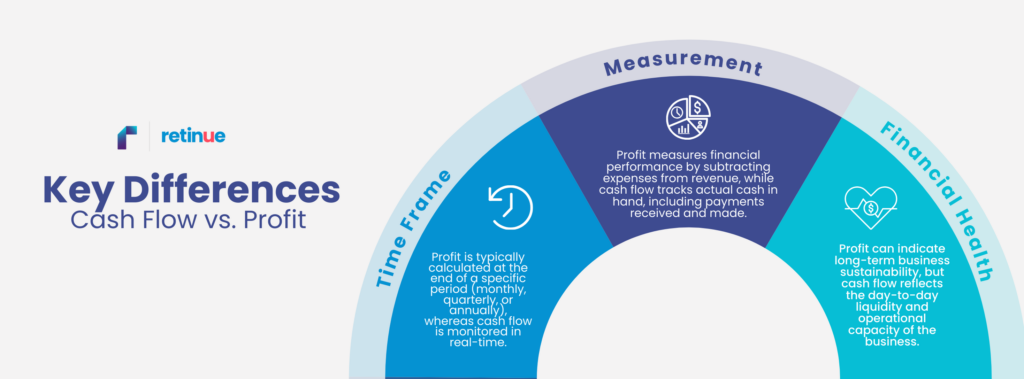
26 September 2024
Understanding the difference between cash flow and profit is essential for any business owner, yet it’s a concept that often causes confusion. While both are critical indicators of financial health, they measure different aspects of your business’s performance.
Profit refers to the money left over after all expenses have been deducted from your total revenue, showing how much your business has earned during a specific period (and don’t forget – profits are also what you live off!).
Cash flow however, tracks the movement of money in and out of your business and reflects your company’s ability to meet immediate financial obligations. In this post, we’ll break down the key differences between cash flow and profit, and explain why both are crucial to sustaining a thriving business.
Profit—often called net income—is the financial gain after deducting all business expenses from your revenue. It’s a clear indicator of a business’s ability to generate income. However, it’s important to note that profit does not consider the timing of cash inflows and outflows; it only measures revenue over expenses.
There are two main types of profit:
While profit is essential for long-term growth, it doesn’t always reflect the real-time financial status of your business. For instance, you may have generated sales and still experience cash shortages if your customers have not paid yet.
Cash flow refers to the movement of money into and out of your business over a specific period. It measures how well you manage your cash resources to cover expenses and invest in growth. Cash flow can be positive or negative:
Unlike profit, cash flow considers the timing of transactions, such as when customers pay invoices or when you pay suppliers. Positive cash flow is essential to keep your business operations running smoothly.
While both profit and cash flow are critical for a business’s survival and growth, they serve different purposes:

Why Both Matter for Your Business
Both cash flow and profit are vital for a healthy business, but their importance can vary depending on the circumstances:
While profit shows your business’s ability to generate revenue, cash flow indicates its capacity to maintain daily operations and fund growth. Balancing both is key to achieving sustainable success and making informed financial decisions.
For professional guidance on managing your cash flow and profitability, call us at 1800 861 566. Let Retinue be your partner in keeping your business thriving.
*Retinue’s (ABN 66 658 618 449) payroll service includes the processing of hours and wages rates provided by you. We do not determine award rates for your employees or provide advice on the correct employment status of your employees. It is your responsibility to ensure that your employees are paid correctly and we recommend obtaining advice from specialised employment relations experts.
Protection is only provided for ATO investigations notified to us during the period which you are a client and relating to any tax returns or lodgements prepared by us. Fines includes any penalties and interest that may result from any errors made by us but does not include any additional tax liability that may result from an amended lodgement.
Liability limited by a scheme approved under Professional Standards Legislation.
©2024 Retinue. All rights.